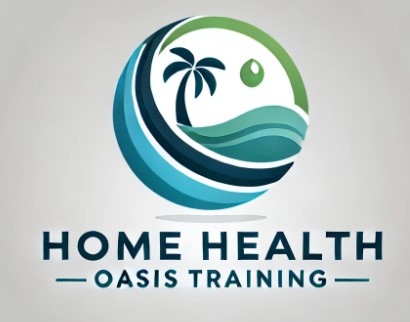How to Align Home Health Documentation with Value-Based Care Models
In recent years, the healthcare industry has been moving towards value-based care (VBC) models, aiming to improve patient outcomes while reducing costs. Unlike the traditional fee-for-service (FFS) models, which reward providers based on the quantity of services they deliver, value-based care emphasizes quality and efficiency. In this context, home health agencies play a crucial role in improving the quality of life for patients with chronic conditions, disabilities, or those who are recovering from surgeries and hospitalizations. However, to effectively participate in value-based care models, home health agencies must ensure that their documentation practices are aligned with the principles of VBC.
This blog explores the importance of thorough and effective documentation in home health settings, explaining how it supports value-based care initiatives and ultimately enhances patient-centered outcomes.
What is Value-Based Care?
Value-based care is an approach to healthcare delivery that prioritizes patient outcomes over the volume of services rendered. Under VBC, healthcare providers are incentivized to deliver high-quality, coordinated care that leads to improved health outcomes, enhanced patient experiences, and reduced healthcare costs. This model contrasts with traditional fee-for-service reimbursement, where providers are paid based on the number of services they provide, regardless of patient outcomes.
The VBC model uses various payment structures, including pay-for-performance, bundled payments, and shared savings arrangements. These reimbursement models reward providers for achieving specific quality measures, improving care coordination, and focusing on preventive measures.
In home health, VBC can involve initiatives like reducing hospital readmissions, improving chronic disease management, and enhancing patient satisfaction—all of which require accurate, consistent, and actionable documentation.
The Role of Documentation in Home Health
Documentation is the backbone of healthcare services. In the home health sector, it serves multiple purposes: guiding clinical care, ensuring reimbursement, and maintaining regulatory compliance. Documentation becomes even more critical in value-based care models because it directly impacts the outcomes and the measurement of those outcomes. Well-documented care plans, progress notes, assessments, and other clinical documents help home health providers:
- Track patient progress and adjust care plans accordingly.
- Ensure that care delivery is aligned with the patient’s goals and preferences.
- Demonstrate the quality and effectiveness of the care provided to secure appropriate reimbursement.
- Meet quality standards and regulatory requirements.
- Provide data for analysis, benchmarking, and continuous improvement in patient care.
How Thorough Documentation Supports Value-Based Care
-
Improved Care Coordination and Collaboration
Value-based care emphasizes the importance of a coordinated, multidisciplinary approach to patient care. Home health agencies often work in collaboration with physicians, hospitals, and specialists to provide comprehensive care. Effective documentation helps ensure that all parties involved have access to up-to-date information regarding the patient’s condition, progress, and care needs.
With the right documentation practices in place, home health agencies can create detailed care plans that outline patient needs, goals, and timelines. This facilitates smoother communication between all providers, preventing gaps or duplications in care and promoting a seamless care experience for the patient.
-
Enhanced Patient-Centered Outcomes
One of the central tenets of value-based care is a focus on improving patient outcomes. In home health settings, this often means ensuring patients are able to maintain or improve their functional abilities, managing chronic conditions effectively, and enhancing their overall quality of life. Documentation that captures these aspects is vital to evaluating and improving patient outcomes over time.
Home health documentation, including assessments of physical function, cognitive status, and patient-reported outcomes (such as pain or satisfaction), helps create a holistic picture of the patient’s health. It also ensures that care is tailored to the individual needs and preferences of the patient, which can lead to better outcomes, higher patient satisfaction, and reduced hospital readmissions.
-
Accurate and Timely Reporting of Quality Metrics
Under value-based care models, healthcare providers are often held accountable for meeting specific quality metrics. These metrics may include readmission rates, functional status improvements, and patient satisfaction. Proper documentation plays a critical role in tracking and reporting these metrics. Without accurate, timely, and comprehensive documentation, providers may not be able to demonstrate that they are meeting these key quality indicators.
For example, a home health agency may need to report on a patient’s progress in managing diabetes. Through consistent documentation, healthcare professionals can record the patient’s blood sugar levels, any changes in treatment, and progress toward goals. This data is invaluable in showing the effectiveness of care interventions and demonstrating the agency’s ability to manage patient outcomes.
-
Data Collection and Evidence-Based Decision Making
Value-based care models encourage the use of data to inform decision-making and drive improvements in care quality. Home health documentation provides a rich source of data that can be used to analyze trends, identify best practices, and drive improvements in care delivery.
For example, by documenting patient outcomes, providers can identify patterns in care delivery that lead to better results. This data can be analyzed to assess the effectiveness of various interventions and inform future care strategies. Furthermore, accurate documentation is essential for meeting the reporting requirements of pay-for-performance programs, which often rely on data collected from electronic health records (EHRs) and other documentation systems.
-
Risk Adjustment and Reimbursement
One of the challenges of value-based care is ensuring that providers are fairly compensated for the care they deliver, particularly when serving patients with complex medical needs. Documentation plays a significant role in risk adjustment—an essential process that adjusts payment rates based on the health status of the population served.
In home health, documentation should accurately reflect a patient’s health conditions, comorbidities, and functional status. This ensures that the provider receives appropriate reimbursement for the level of care required. It also helps prevent underpayment for patients with higher needs and ensures that agencies are not penalized for treating a more complex patient population.
-
Regulatory Compliance and Accreditation
Home health agencies must adhere to various regulatory standards, including those set by the Centers for Medicare & Medicaid Services (CMS) and the Joint Commission. Comprehensive and accurate documentation is essential for compliance with these regulations, which are often tied to quality measures under value-based care models.
In many cases, home health documentation is reviewed by external auditors or regulatory bodies. Ensuring that documentation meets the required standards not only helps agencies avoid penalties but also positions them to participate in VBC initiatives, which may include shared savings or bundled payment programs.
Key Documentation Practices for Aligning with Value-Based Care
To align home health documentation with value-based care models, agencies must adopt specific practices that enhance the quality, accuracy, and utility of their documentation. Some of these practices include:
-
Standardized and Structured Documentation Formats
Using standardized templates and formats ensures consistency across all patient records and enables easier tracking of progress over time. Structured documentation allows healthcare professionals to capture relevant data in a way that can be easily analyzed and interpreted. This is crucial when reporting on quality measures or meeting compliance requirements.
-
Comprehensive Initial Assessments
A thorough initial assessment is the foundation of an effective care plan and ensures that the documentation captures a detailed picture of the patient’s health needs. The assessment should include not only medical conditions but also psychosocial factors, functional status, and patient goals. This comprehensive approach allows for the development of individualized care plans that support value-based care objectives.
-
Regular Progress Notes and Outcome Tracking
Continuous documentation of patient progress—through regular visits, updates to the care plan, and outcome measures—ensures that the care plan remains dynamic and responsive to the patient’s needs. By tracking functional improvements, symptom management, and quality-of-life indicators, home health providers can demonstrate their impact on patient outcomes.
-
Patient-Reported Outcomes
Incorporating patient-reported outcomes (PROs) into home health documentation is a valuable strategy for improving patient-centered care. PROs provide insights into a patient’s experience with their condition and treatment, helping providers better understand the patient’s perspective. These outcomes can then inform care decisions, improving both patient satisfaction and clinical outcomes.
-
Utilizing Electronic Health Records (EHRs)
The use of electronic health records is essential for maintaining accurate, accessible, and up-to-date patient documentation. EHRs allow for easier data sharing, improved care coordination, and better compliance with value-based care reporting requirements. With EHRs, home health agencies can integrate patient data from various sources, such as hospitals, primary care physicians, and specialists, to ensure a comprehensive view of the patient’s health.
Conclusion
Aligning home health documentation with value-based care models is a critical step toward achieving better patient outcomes, improving care coordination, and ensuring appropriate reimbursement. Thorough, consistent, and accurate documentation not only supports the delivery of high-quality care but also helps home health agencies navigate the complexities of value-based care reimbursement systems. By focusing on patient-centered outcomes, tracking quality metrics, and leveraging data for continuous improvement, home health agencies can contribute to the broader goals of value-based care—delivering better outcomes for patients while controlling costs for the healthcare system as a whole.
For home health agencies to succeed in a value-based care environment, they must invest in training, technology, and standardized processes that ensure documentation is aligned with these emerging models. By doing so, they can meet regulatory requirements, improve patient care, and thrive in an increasingly value-driven healthcare landscape.
Editor's Pick
Leave A Comment
Related Posts
- Published On: June 2, 2024
Transition from OASIS-E to OASIS-E1: Key Changes and Implications for […]
- Published On: May 28, 2024
Importance of Clinical Narrative and Nurse Teachings while Documenting Home Health OASIS Assessments
Importance of Clinical Narrative and Nurse Teachings while Documenting Home […]
- Published On: April 29, 2025
Navigating the Complexities of Medicare and Medicaid Reimbursement for Home […]
- Published On: April 27, 2025
Engaging Your Team Around the IPR: Turning Data into Motivation […]
- Published On: April 27, 2025
Engaging Your Team Around the IPR: Turning Data into Motivation […]

